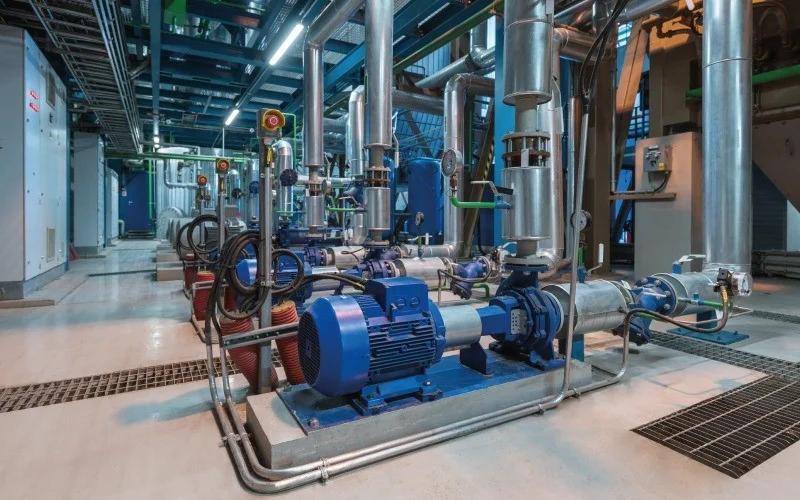At 2:30 AM on a frigid January morning, the emergency dispatch center in Cedar Rapids received an urgent call. A critical wastewater pump station had failed, threatening to flood residential areas with raw sewage. The subsequent cleanup cost exceeded $400,000, not including the regulatory fines and damaged community reputation. This scenario plays out across the United States more often than we’d like to admit—but it doesn’t have to.
According to the American Water Works Association, unplanned pump failures cost municipal utilities an average of $50,000 per incident when factoring in emergency repairs, environmental remediation, and regulatory compliance. Yet many maintenance managers still rely on reactive maintenance strategies that guarantee these costly surprises will continue.
The solution lies in transforming how we approach pump station maintenance through strategic implementation of predictive maintenance technologies. Modern predictive maintenance pump stations not only prevent catastrophic failures but also optimize operational efficiency and extend equipment lifecycles far beyond traditional maintenance approaches.
Understanding the Foundation of Predictive Maintenance
Predictive maintenance represents a fundamental shift from “fix it when it breaks” to “fix it before it breaks.” This approach leverages real-time data collection and analysis to identify potential equipment failures weeks or months before they occur.
Unlike preventive maintenance, which follows predetermined schedules regardless of actual equipment condition, predictive maintenance pump stations use continuous condition monitoring to make maintenance decisions based on actual equipment health. This data-driven approach eliminates unnecessary maintenance while catching problems before they escalate into failures.
The key difference lies in timing and precision. Traditional maintenance schedules might call for bearing replacement every 18 months, regardless of whether those bearings have six months or six years of useful life remaining. Predictive maintenance tells you exactly when those bearings need attention, maximizing both equipment life and maintenance budget efficiency.
Core Technologies Driving Predictive Success
Vibration Analysis: The Heartbeat of Your Pumps
Vibration analysis serves as the cornerstone of most predictive maintenance programs. Every rotating piece of equipment produces a unique vibration signature when operating normally. As components wear or develop problems, this signature changes in predictable ways.
Modern vibration monitoring systems can detect bearing wear, shaft misalignment, impeller imbalance, and cavitation issues long before they become audible or visible. Portable vibration analyzers allow maintenance teams to conduct regular assessments, while permanently installed sensors provide continuous monitoring for critical assets.
The key to successful vibration analysis lies in establishing baseline measurements for each pump when it’s operating in optimal condition. These baselines become the reference point for detecting changes that indicate developing problems.
SCADA Integration: Your Central Nervous System
SCADA (Supervisory Control and Data Acquisition) systems have evolved far beyond simple pump control interfaces. Modern SCADA platforms serve as comprehensive condition monitoring hubs, collecting and analyzing data from multiple sensors simultaneously.
Today’s SCADA systems can monitor motor current signatures, bearing temperatures, pump flow rates, and pressure differentials while correlating this information to identify patterns that predict failures. Advanced analytics within SCADA platforms can even recommend optimal maintenance windows based on operational demands and equipment condition.
The integration of predictive maintenance pump stations with SCADA systems creates a powerful synergy. Operators receive real-time alerts about developing problems while maintaining complete visibility into system performance and maintenance needs.
Temperature and Thermal Monitoring
Heat often precedes mechanical failure in pump systems. Thermal monitoring using infrared cameras or permanently installed temperature sensors can identify problems like bearing deterioration, motor winding issues, or inadequate lubrication before they cause catastrophic damage.
Regular thermal inspections should focus on motor bearings, coupling connections, and electrical connections. Establishing temperature baselines and trending data over time reveals gradual changes that indicate developing problems.
Implementation Strategies for Maximum Impact
Start with Critical Assets
Not every pump in your system requires the same level of monitoring. Begin your predictive maintenance program by identifying pumps whose failure would have the greatest operational, environmental, or financial impact. These critical assets should receive comprehensive monitoring systems and frequent condition assessments.
Consider factors like replacement cost, environmental consequences of failure, availability of backup systems, and historical failure patterns when prioritizing assets for predictive maintenance implementation.
Develop Standard Operating Procedures
Successful predictive maintenance programs require consistent procedures for data collection, analysis, and response. Develop standardized routes for vibration data collection, establish clear criteria for alert levels, and create response protocols for different types of problems.
Documentation plays a crucial role in program success. Maintain detailed records of all measurements, trending data, and maintenance actions. This historical data becomes invaluable for refining your predictive models and demonstrating program value.
Training and Team Development
The most sophisticated monitoring equipment is only as effective as the people interpreting its data. Invest in training for maintenance personnel to understand vibration analysis, thermal imaging, and SCADA data interpretation.
Consider partnering with equipment manufacturers or third-party specialists to provide initial training and ongoing support. Many specialized pump service part providers offer comprehensive training programs designed specifically for municipal utilities.
Measuring Success and ROI
Downtime Reduction Metrics
Track key performance indicators that demonstrate the impact of your predictive maintenance program. Primary metrics should include unplanned downtime hours, emergency maintenance calls, and mean time between failures.
Establish baseline measurements before implementing predictive maintenance to accurately measure improvement. Most utilities see 25-35% reduction in unplanned downtime within the first year of program implementation.
Asset Lifecycle Extension
Predictive maintenance significantly extends asset lifecycle by optimizing maintenance timing and preventing premature failures. Track equipment service life, maintenance costs per asset, and replacement deferrals to quantify these benefits.
Well-executed predictive maintenance programs typically extend pump life by 15-25% while reducing total maintenance costs by 20-30%.
Actionable Steps for Implementation
Ready to transform your pump station maintenance approach? Start with these concrete steps:
Immediate Actions (Next 30 Days):
- Conduct a critical asset assessment to identify your highest-priority pumps
- Establish baseline vibration and temperature measurements for critical equipment
- Review your current SCADA capabilities and identify gaps
Short-term Goals (Next 90 Days):
- Implement regular condition monitoring routes for critical assets
- Develop standard operating procedures for data collection and analysis
- Begin trending key performance indicators
Long-term Strategy (Next 12 Months):
- Expand monitoring to additional assets based on initial results
- Integrate predictive maintenance data with your computerized maintenance management system
- Calculate and document return on investment to justify program expansion
The transition from reactive to predictive maintenance pump stations doesn’t happen overnight, but the benefits—reduced costs, improved reliability, and eliminated emergency situations—make the journey worthwhile. Your community depends on reliable water and wastewater services, and predictive maintenance ensures you’ll deliver them consistently while maximizing the value of every maintenance dollar.
Read More From Techbullion



































